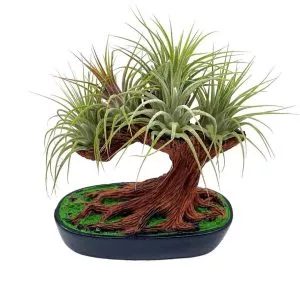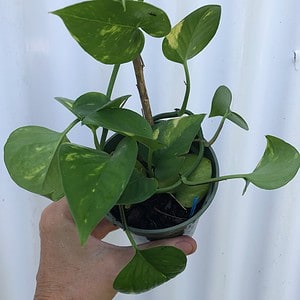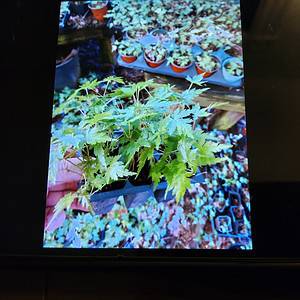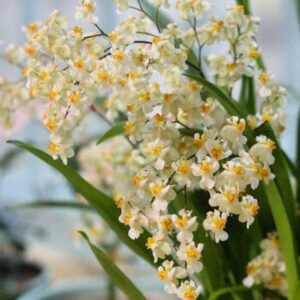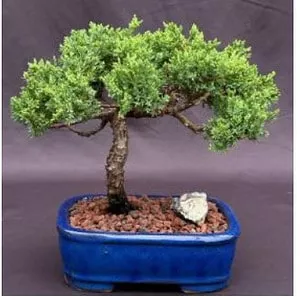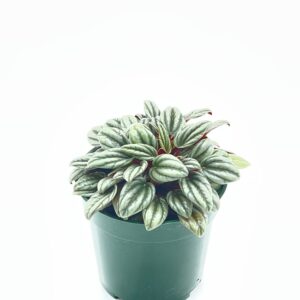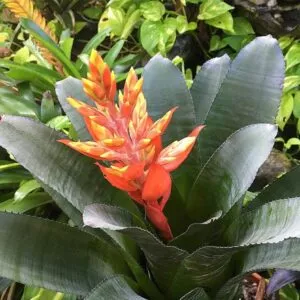No products in the cart.
Table of Contents
Want to have another houseplant with vibrant foliage? The richness of powder blue foliage on the ‘Blue Wedgwood’ hosta is its calling characteristic, which is perfect for you! Its heart-shaped leaves have wavy edges and deep veins.
They’re hefty and thick, with a powdered or chalky matte finish that can take on a smoky, blue-gray tint.
This reflects the matte blue colors and textures of traditional Wedgwood stoneware, particularly the powder blue jasperware made by the Josiah Wedgwood studio in the 18th century and connected with it all these years later. Early bloomers, these plants produce lilac-colored flowers in the early to midsummer months.
Want to add this Wedgwood blue indoor plant to your collection? Well, I tell you this is the perfect decoration for your home. Read below to find out more!
Wedgwood Blue Plant Care Basics

Before anything else, have a sneak-peak at the plant’s overview. It can be a great help in knowing these Hosta plants.

Already knew these Hosta shrubs? Let us now learn how to take care of them efficiently. Find yourself comfortable, and let’s get started!!
Recommended Potting mix
The Wedgwood blue likes rich, loamy soil with good drainage and a neutral pH. Though they can survive clay soil, it may slow their growth. Remember that these Hostas are especially sensitive to overwatering, so choosing a location with good drainage and a slightly alkaline soil type is critical.
Lighting Requirement

You can place your Wedge-shaped in an entire shade area of the garden. But in most days, they require full sun to thrive. Although lilacs may tolerate some shade, too little light will limit their flowering.
Pro tip: A house’s northern and eastern sides receive the least light, with the northern exposure being the shadiest. Due to the powerful afternoon sun, the western and southern sides of a house receive the most light and are considered the warmest exposures.
Watering Needs
Water the solid pale blue jasper to the soil level, and if you live in a rainy area, you don’t need to water them more than once a week during the summer. These Hostas prefer a moderate amount of moisture in the soil. Soggy soil, on the other hand, might cause root rot and poor blooming. Water young Blue Wedgwood regularly to keep the soil moist. Watering mature plants is usually only required during times of drought.
In stock In stock In stock In stock
$13.95
Sold By:
SunSoul Plants
$18.95Maranta Red ‘Prayer Plant’ – Maranta leuconeura in 3 or 4″ pot
Only 1 available and it’s in 3 people’s basket Rated 4.87 out of 5 based on 98 customer ratings00
Sold By:
SunSoul Plants
$29.99
Sold By:
BubbleBlooms
Bonsai Air Plant Tree, Air Plant Holder with Live air plants, plant gift
Rated 4.81 out of 5 based on 279 customer ratings00
Sold By:
BubbleBlooms
$20.00
Sold By:
Beauties & Beasts
Cactus- Tephrocactus articulatus var strobiliformis
Only 2 available and it’s in 1 people’s basket Rated 4.83 out of 5 based on 24 customer ratings00
Sold By:
Beauties & Beasts
Free Shipping
$12.95
Sold By:
SunSoul Plants
$17.95Golden Pothos, Epipremnum Aureum in 3″ pot, Devil’s ivy, free shipping
Only 3 available and it’s in 2 people’s basket Rated 4.87 out of 5 based on 98 customer ratings00
Sold By:
SunSoul Plants
Ideal Temperature & Humidity
The Blue Wedgwood prefers somewhat cool summers. They are not suitable for hot, humid climates such as those found in the southern United States. Plants can develop fungal illnesses as a result of high humidity. They can also withstand temperatures well below freezing, though they prefer to be protected from strong cold winds that can harm flower buds and break stems.
Necessary Fertilizer

Lilac bushes, especially those in poor soil, can benefit from spring feeding. However, avoid using a nitrogen-rich fertilizer, as this can cause poor blooming. Instead, use a balanced fertilizer and follow the directions on the label.
Pro tip: After the blooms have bloomed, apply lime and rotten manure to the root. You can also use a layer of compost under the plant in the spring, then mulch to keep moisture in and weeds out.
Propagation
The majority of lilacs are clump-forming plants with shoots emerging from the trunk. These shoots can also be used to propagate the plant. When you decide to breed it, the optimal period is in late spring or early summer. It is when the shoots have had enough time to establish themselves before the winter season arrives.
Here’s how you will do it:
Simply dig down around one of the shoots and clip it from the main plant. Remember to leave the roots intact without damaging them. Then, replant the shoot wherever you like in rich soil, keeping the soil mildly damp (but not waterlogged) until it’s established.
In stock In stock Only 1 left in stock In stock
$18.95
Sold By:
Willows Bonsai
6 pack Japanese Maples Great for Bonsai or Nursery Stock
Sold By:
Willows Bonsai
Free Shipping
$34.99
Sold By:
Aloha Hawaii Orchids
$39.99Live Oncidium Twinkle ‘White’ ‘Gold Dust’ Orchid from Hawaii | Tropical Hawaiian Exotic Plant
Rated 4.65 out of 5 based on 268 customer ratings01
Sold By:
Aloha Hawaii Orchids
Free Shipping
$186.89
Sold By:
BONSAI WORLD LLC
Juniper Bonsai Tree – Trained (juniper procumbens nana)
Only 1 available and it’s in 1 people’s basket
Sold By:
BONSAI WORLD LLC
$14.95
Sold By:
SunSoul Plants
$19.95Peperomia clusiifolia Red Edge in 3″ pot
Only 2 available and it’s in 1 people’s basket Rated 4.87 out of 5 based on 98 customer ratings00
Sold By:
SunSoul Plants
Growth Zone

The Blue Wedgwood is hardy in USDA zones 3-7.
Potting and Pruning
It is recommended to use a container at least 12 inches deep and 24 inches wide, and as large as you can manage. Larger containers provide better root insulation from excessive heat or cold. And it is crucial to pick those containers with proper drainage!
After the bushes have bloomed in the spring, make careful to prune them. When the blossoms begin to cluster, it’s time to prune. Annually, after they bloom, remove the deadwood. Cut back the tall canes and fragile branches, and make sure the old canes are pruned to the ground.
Wedgwood Blue Varieties and Similar Plants
Ready to find out that there’s more like this beauty? Many different types of lilac bushes bloom with vibrant spring hues, but one constant is their lovely aroma. And we are here to introduce you to some of them!
- Yankee Doodle Syringa vulgaris
Syringa vulgaris ‘Yankee Doodle’ (Lilac) is an upright, deciduous shrub with wonderfully showy panicles, 8 in. It is a good, deciduous shrub with incredibly showy panicles, 8 in. length (20 cm), with single, deep purple flowers that are very fragrant. The numerous blossoms span 3-4 weeks and make a striking spectacle when they bloom in late spring.
- Belle de Nancy Syringa vulgaris
This plant is an attractive French Lilac with highly fragrant, double flowers that are especially attractive to butterflies and bees. This upright Lilac will grow to a height and spread of 2.5 x 2 meters in 20 years, making it ideal for a small garden tree or upright shrub.
- Madame Lemoine Syringa vulgaris
It is regarded as one of the best white lilacs. This outdoor plant is an erect, deciduous shrub with huge, spectacular panicles packed with delightfully scented, double, white flowers. This lilac cultivar can reach a height of 15 feet and a width of 12 feet. It can be used in zones 3 through 8.
In stock Only 3 left in stock (can be backordered) In stock In stock
$12.99
Sold By:
BubbleBlooms
Peperomia Rosso albovittata, Piccolo Banda / Ivy Leaf Peperomia / Peperomia Piccolo Peacock / Peacock Peperomia
Rated 4.81 out of 5 based on 279 customer ratings00
Sold By:
BubbleBlooms
Free Shipping
$21.99
Sold By:
Gar-Zen Botanical Design
Red Brazil Bromeliad Aechmea nudicaulis
Only 3 available and it’s in 2 people’s basket Rated 4.86 out of 5 based on 49 customer ratings00
Sold By:
Gar-Zen Botanical Design
$9.99
Sold By:
Cacti and Exotica
Crassula Ovata Gollum
Rated 4.98 out of 5 based on 59 customer ratings00
Sold By:
Cacti and Exotica
$15.99
Sold By:
BubbleBlooms
Homalomena Selby, 4 inch, Variegated Queen of Hearts, shield plant
Rated 4.81 out of 5 based on 279 customer ratings00
Sold By:
BubbleBlooms
Wedgwood Blue Plant Diseases & Pests
These rare plants are pretty robust that can withstand a variety of pest and disease concerns. They are, nevertheless, vulnerable to several things.
Scales and borers are two common pests that can harm lilacs and destroy their foliage. Lilac borers are a type of moth that feeds on lilac bushes. When pruning your lilac bush, keep an eye out for eggs, or look for a safe insecticide to prevent borers without jeopardizing your lilac bush’s health.
Treat your plant with neem oil or similar insecticide if you notice these tiny insects on the stems and undersides of leaves. They are also susceptible to slugs and snails.
When a Wedgwood blue isn’t pruned properly, powdery mildew might develop. After flowering, the optimum time to prune is in the summer to ensure that your Lilac doesn’t have too many heavy canes the following flowering season. This can be seen on the leaves of lilac bushes.
When bacteria causes flowers to turn brown and flower buds to turn black, dark black streaks appear. It’s challenging to deal with, but you can ask for a blight-resistant variety when purchasing a lilac bush. Prune out any infected sections of a lilac bush infested with lilac blight and avoid overwatering.
Frequently Asked Questions
Give your Angelonia plants a full day of sun to give them the energy they need to keep blooming. Plants that receive less than six hours of direct sunshine become spindly and produce scant flowers.
Angelonia plants, unlike many annuals, do not require deadheading to enhance blooming. Cutting the plants back, on the other hand, encourages bushier growth.
Angelonia plants have white, pink, mauve, yellow, and blue spikes. It’s a low-maintenance plant that attracts butterflies and looks stunning when paired with Pentas.
No need to look for any shop to buy these beauties! You can now have your own Blue Wedgwood here at Plantly! We offer faster transactions online and will deliver your plants safely. Message us now!!
Whether you want to buy, sell or simply reach out to other plant enthusiasts, Plantly is the right place to be!
-
$18.95Sold By: Willows Bonsai
In stock
6 pack Japanese Maples Great for Bonsai or Nursery Stock
Sold By: Willows Bonsai -
Free Shipping$34.99Sold By: Aloha Hawaii Orchids
$39.99In stock
Live Oncidium Twinkle ‘White’ ‘Gold Dust’ Orchid from Hawaii | Tropical Hawaiian Exotic Plant
Rated 4.65 out of 5 based on 268 customer ratings01Sold By: Aloha Hawaii Orchids -
Free Shipping$186.89Sold By: BONSAI WORLD LLC
Only 1 left in stock
Juniper Bonsai Tree – Trained (juniper procumbens nana)
Only 1 available and it’s in 1 people’s basketSold By: BONSAI WORLD LLC -
$14.95Sold By: SunSoul Plants
$19.95In stock
Peperomia clusiifolia Red Edge in 3″ pot
Only 2 available and it’s in 1 people’s basketRated 4.87 out of 5 based on 98 customer ratings00Sold By: SunSoul Plants

